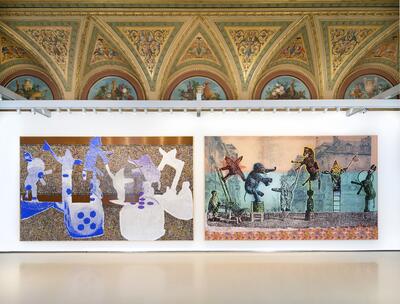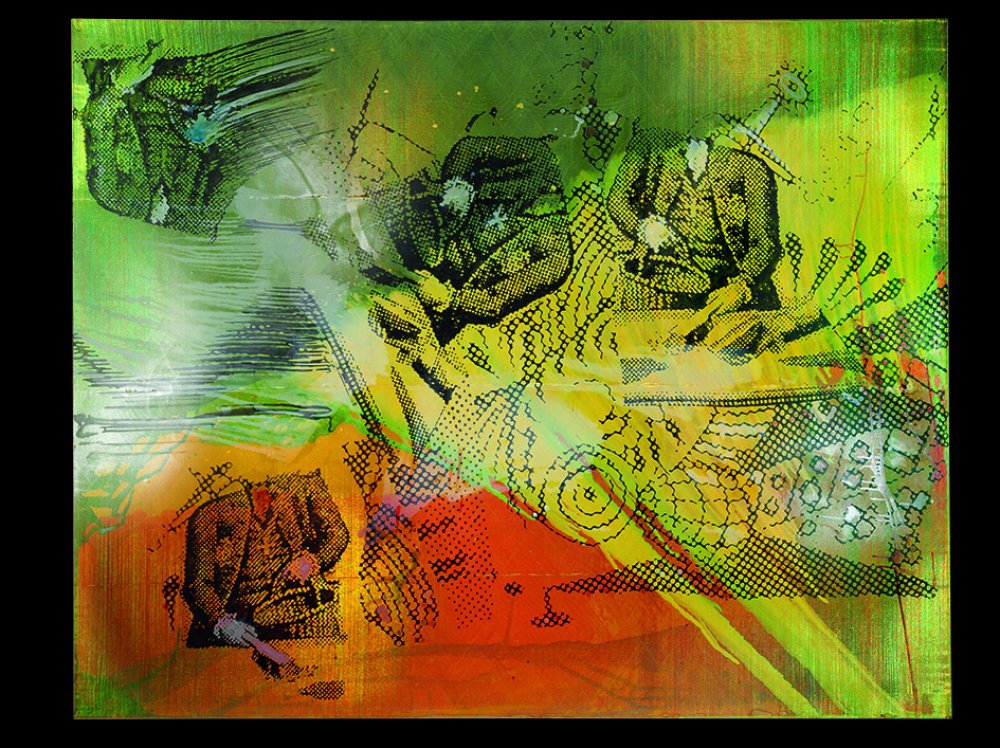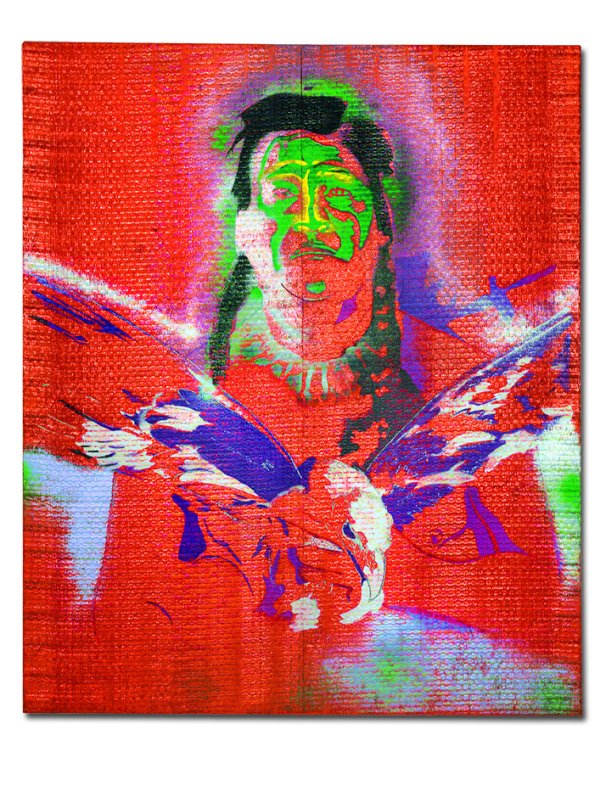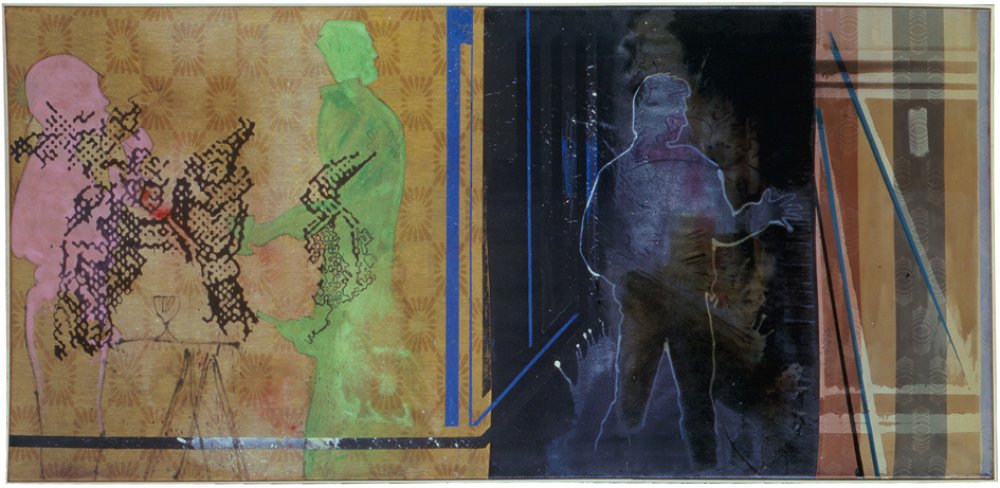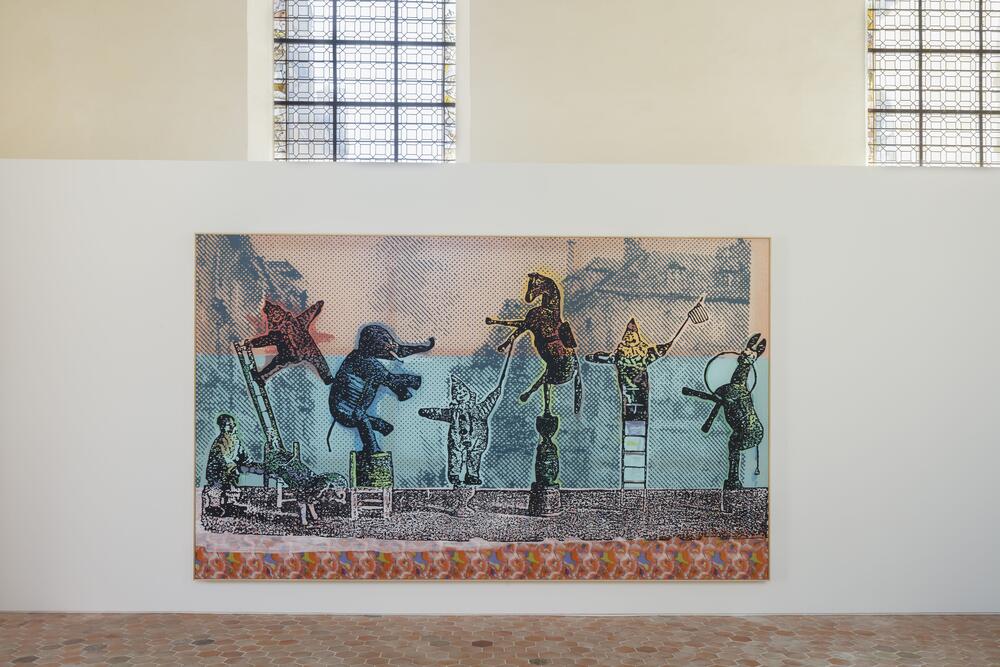Axial Age
2005-2007
9 panels Artificial resin, dry pigment on fabric (and on some panels : spray paint and acrylic)
Variable dimensions
Axial Age is a monumental series referring to the eponymous concept put forth by philosopher Karl Jaspers in The Origin and Meaning of History (1949). Jaspers views a period of antiquity between 800 and 200 B.C. as a time of extraordinary intellectual vitality in the great civilisations of Greece, the Near East, India and China. The various figures and motifs running across the series’ purple, cosmic background suggest a lost golden age of humanity.
The leitmotivs in Sigmar Polke's work can be seen in the seven paintings that make up Axial Age. On the one hand, on the formal level, there is a desire to make the canvas a translucent screen, breaking the rules of frontality in painting. On the other, Polke uses old painting methods associated with other composites. On the plane of signifiers, on the other hand, he refuses to adhere to a single visual language, takes an interest in alchemical symbols, and appropriates syncretic iconographic fragments from a wide range of sources.
Created for the 52nd Venice Biennale in 2007, the Axial Age series has since entered the Pinault Collection. It was included in several group shows, starting with "Mapping the Studio" in 2009 at the Palazzo Grassi and Punta della Dogana.
The leitmotivs in Sigmar Polke's work can be seen in the seven paintings that make up Axial Age. On the one hand, on the formal level, there is a desire to make the canvas a translucent screen, breaking the rules of frontality in painting. On the other, Polke uses old painting methods associated with other composites. On the plane of signifiers, on the other hand, he refuses to adhere to a single visual language, takes an interest in alchemical symbols, and appropriates syncretic iconographic fragments from a wide range of sources.
Created for the 52nd Venice Biennale in 2007, the Axial Age series has since entered the Pinault Collection. It was included in several group shows, starting with "Mapping the Studio" in 2009 at the Palazzo Grassi and Punta della Dogana.
Exhibitions
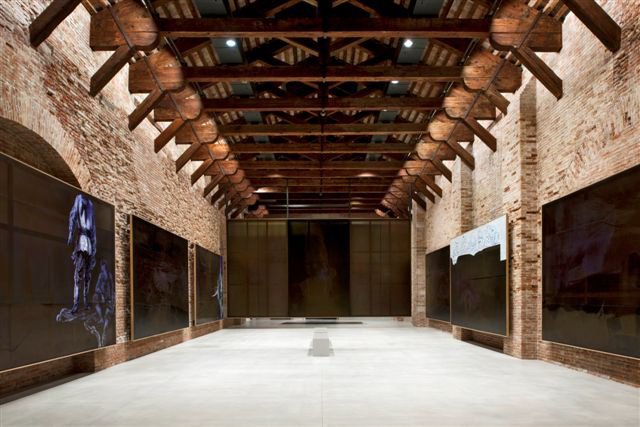
© The Estate of Sigmar Polke, Cologne / Adagp, Paris.
© Palazzo Grassi Spa.
Photo : ORCH orsenigo_chemollo
Exhibition view, Mapping The Studio, Venice, June 6 2009 - April 10 2011.

© The Estate of Sigmar Polke, Cologne / Adagp, Paris.
Photo: Matteo De Fina
© Palazzo Grassi
Exhibition view, Venise, Palazzo Grassi, Sigmar Polke, April 17th - November 6th 2016
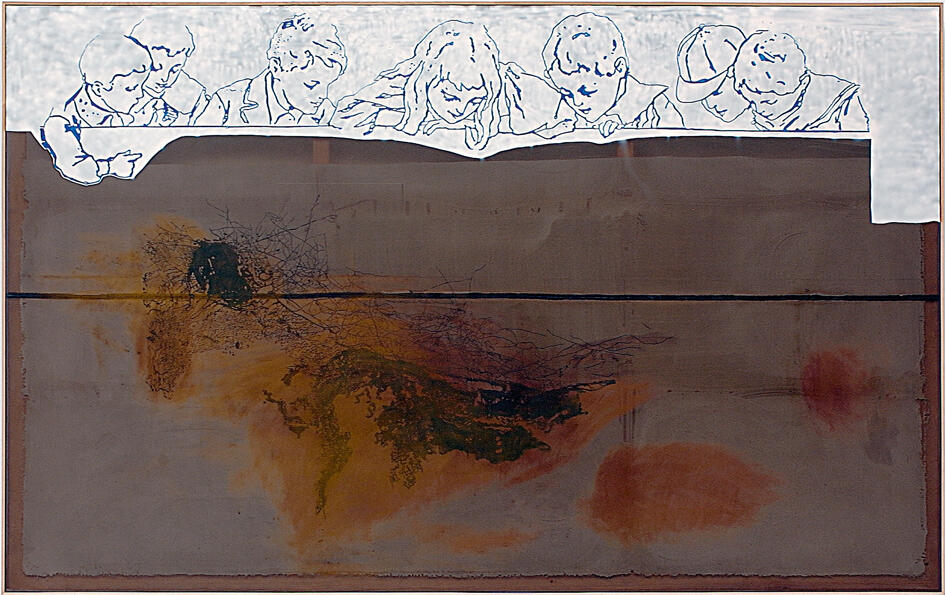
© The Estate of Sigmar Polke, Cologne / Adagp, Paris.
Detail: Jugendstil.
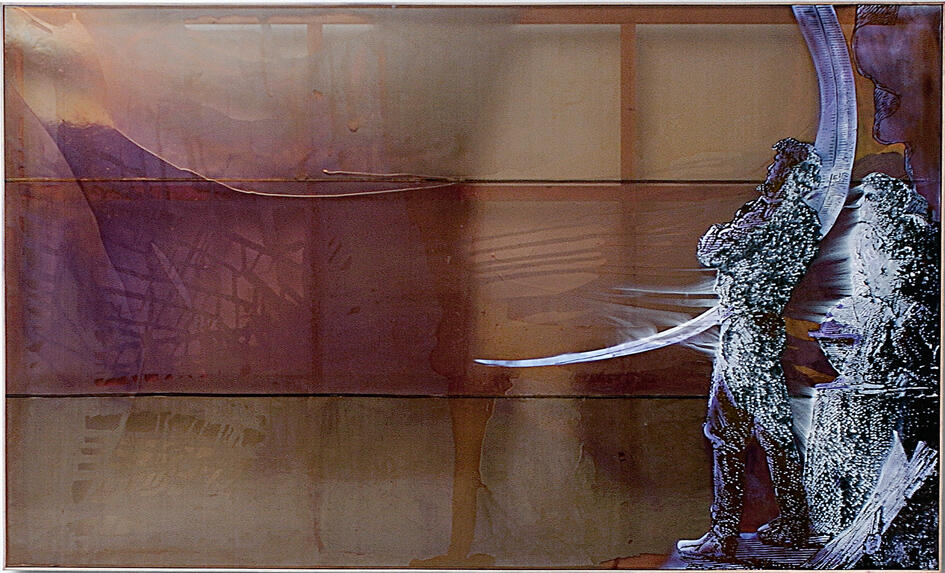
© The Estate of Sigmar Polke, Cologne / Adagp, Paris.
Detail: Forward.

© The Estate of Sigmar Polke, Cologne / Adagp, Paris.
Detail: Determinatoin of the position : here it is.
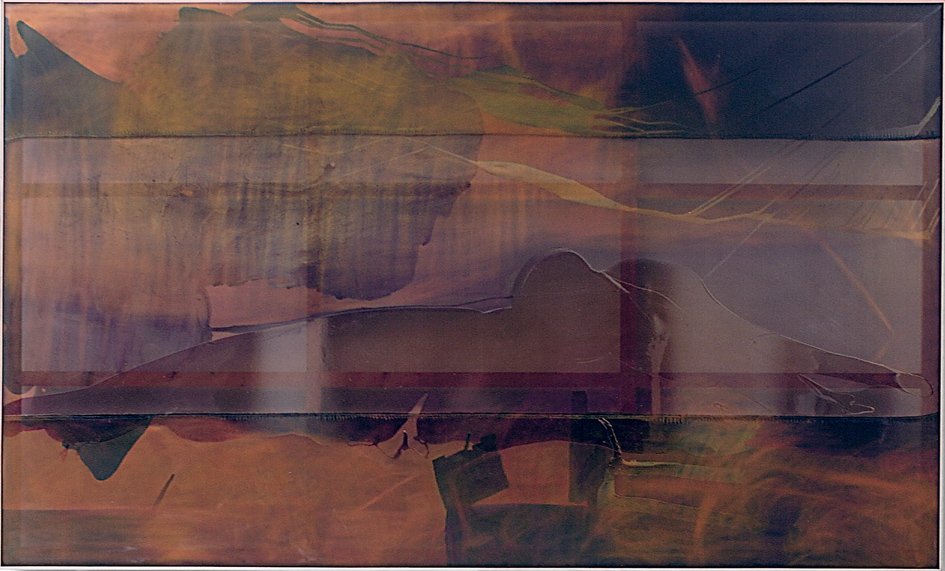
© The Estate of Sigmar Polke, Cologne / Adagp, Paris.
Detail: Urlicht.

© The Estate of Sigmar Polke, Cologne / Adagp, Paris.
Photo: Matteo De Fina
© Palazzo Grassi
Detail: Neo-Byzantium.
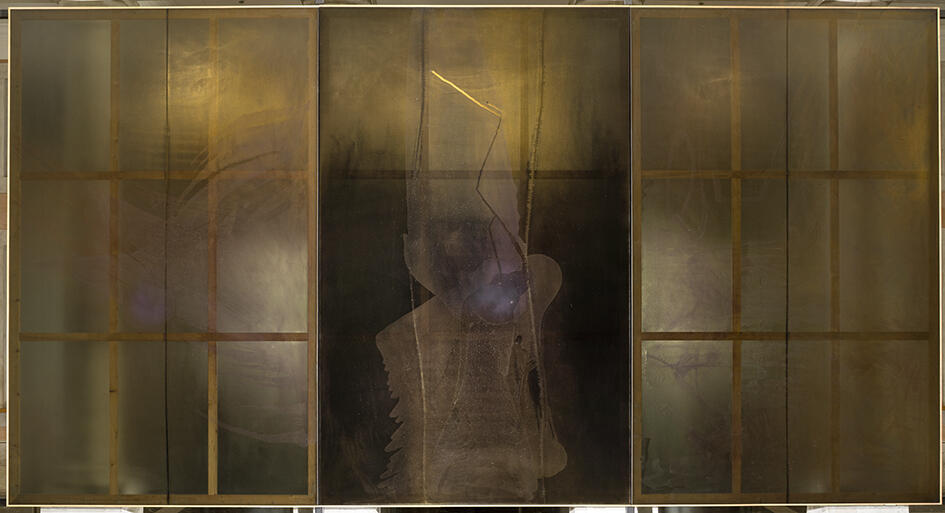
© The Estate of Sigmar Polke, Cologne / Adagp, Paris.
Photo: Matteo De Fina
© Palazzo Grassi
Detail: Deucalion's flood.
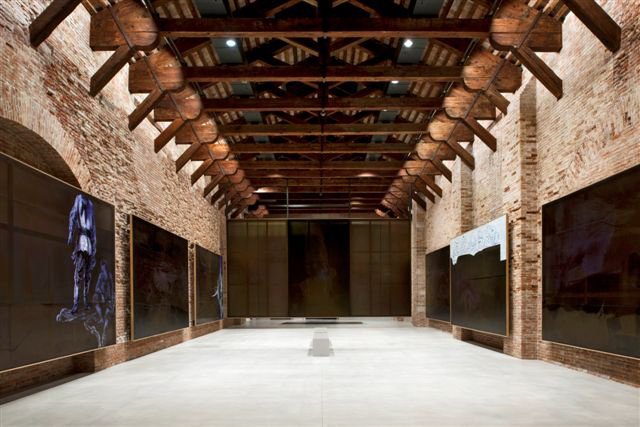
© The Estate of Sigmar Polke, Cologne / Adagp, Paris.
© Palazzo Grassi Spa.
Photo : ORCH orsenigo_chemollo
Exhibition view, Mapping The Studio, Venice, June 6 2009 - April 10 2011.

© The Estate of Sigmar Polke, Cologne / Adagp, Paris.
© Palazzo Grassi Spa.
Photo : ORCH orsenigo_chemollo
Exhibition view, Mapping The Studio, Venice, June 6 2009 - April 10 2011.
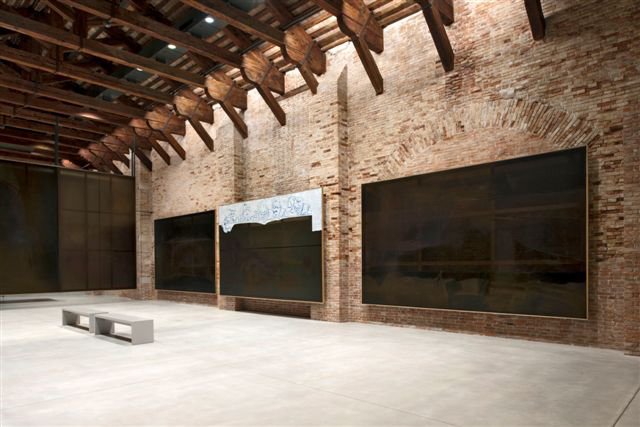
© The Estate of Sigmar Polke, Cologne / Adagp, Paris.
© Palazzo Grassi Spa.
Photo : ORCH orsenigo_chemollo
Exhibition view, Mapping The Studio, Venice, June 6 2009 - April 10 2011.
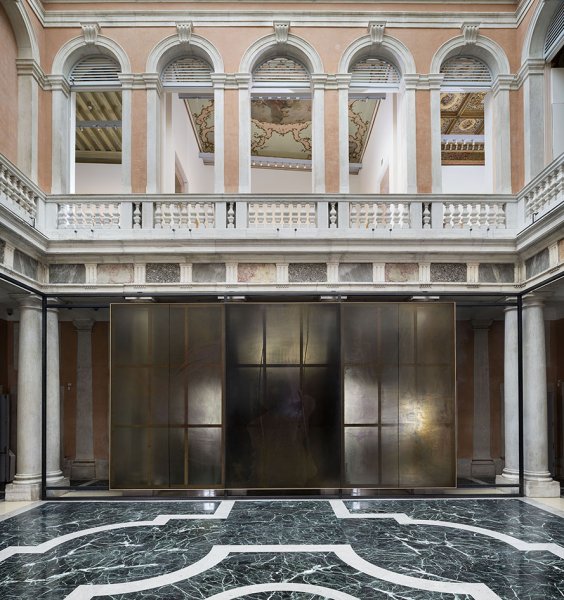
© The Estate of Sigmar Polke, Cologne / Adagp, Paris.
Photo: Matteo De Fina
© Palazzo Grassi
Exhibition view, Venise, Palazzo Grassi, Sigmar Polke, April 17th - November 6th 2016
